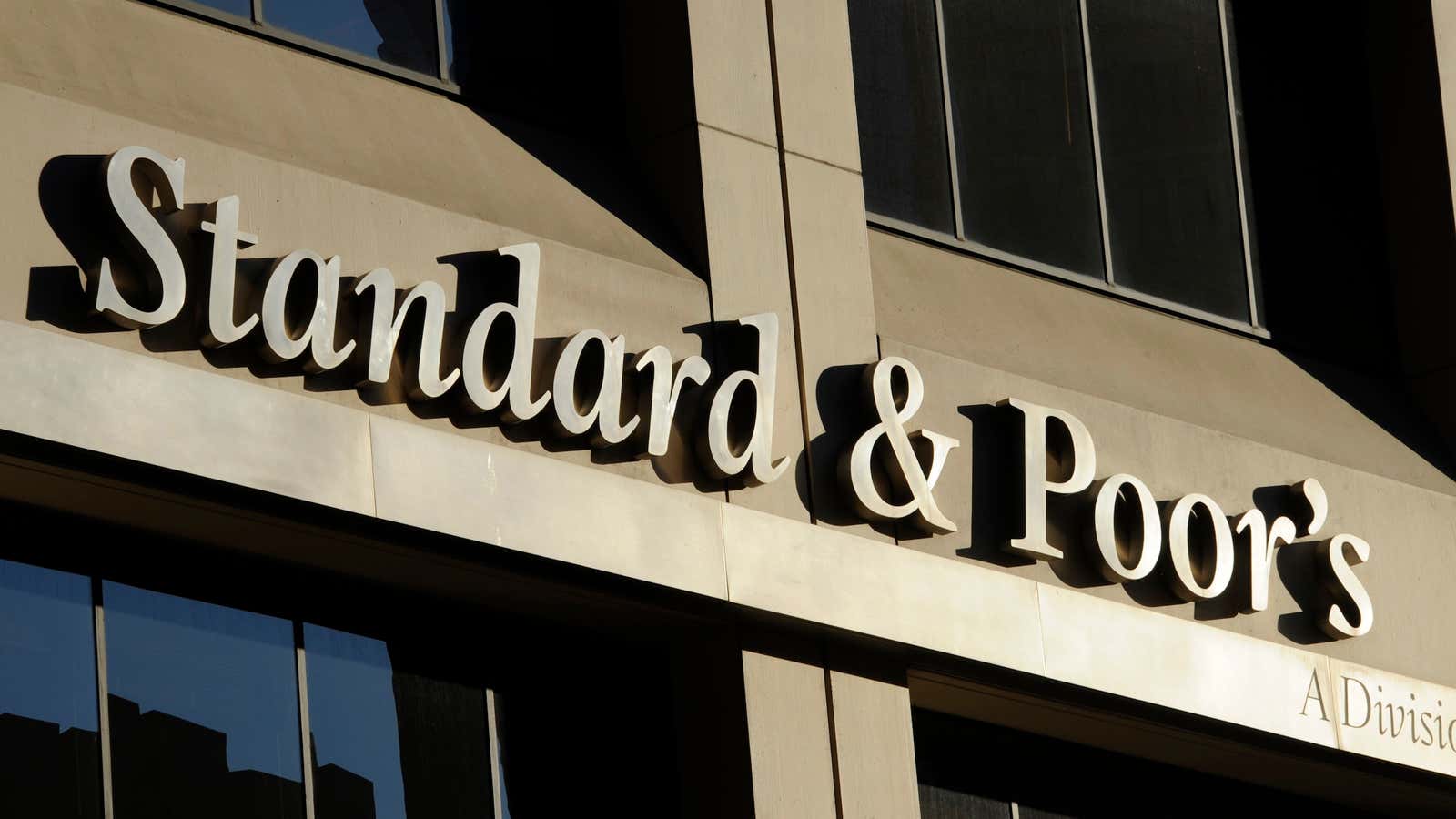Standard & Poor’s might be back at it again, at least if we’re to trust an analysis from Commercial Mortgage Alert and the New York Times. Apparently, it’s been giving higher ratings to certain mortgage-backed securities than have rival credit ratings agencies Moody’s and Fitch.
Many pension funds are allowed to buy only securities that are rated highly. So clearly a higher rating on a security will help a bank drum up demand for it and sell it at a higher price. The problem is, the bank that sells the security also pays for the credit rating, and it can choose among multiple agencies. So agencies have an incentive to give out more favorable ratings to get business.
Agencies have toughened their standards since 2007, when their ratings on US mortgage-backed securities proved horribly wrong. But the crisis and its aftermath have been particularly vicious for S&P. The agency faced internal tumult in 2011 over its ratings methodology for commercial mortgage-backed securities, further weakening its credibility. According to the New York Times, its market share in the product was 22% in 2011, down from 80% in 2006. Earlier this year it became, for reasons that remain unclear, the only agency of the big three to face a government lawsuit alleging it defrauded investors by issuing overly favorable ratings.
The new analysis by Commercial Mortgage Alert looks at what happened after S&P introduced new standards for rating bonds linked to commercial real estate in September 2012. The data suggest that since then S&P has consistently given out better ratings on such bonds than Moody’s and Fitch.
For its part, S&P’s says the report’s methodology was flawed. We’ve contacted S&P for a deeper explanation, and we’ll update this post if they get back to us.
Part of S&P’s defense in a (failed) motion to dismiss its case against the government has been that, even if it did let its desire for business influence its analysts’ ratings, any promises it made to be honest and objective were just “puffery,” which any well-informed investor should have been expected to overlook. Which raises the question: If a ratings agency can give out consistently higher ratings than its competitors and admits that those ratings are motivated by financial gain, what are credit ratings really for, anyway?
Update: Standard & Poor’s has sent a letter to the editor of the New York Times, charging that the article misrepresented the difference between S&P’s ratings and those of its competitors, which Quartz received in an email:
Based on the dollar value of the transactions cited by The Times, 97% of the CMBS S&P has rated since changing its methodology were rated the same as or lower than other rating agencies. As more aggressive transactions have recently come to market, issuers have chosen not to meet S&P’s stringent criteria and S&P’s market share has fallen by more than half from the first quarter to the second quarter of 2013. In addition, by calculating the differences among rating agencies based on the total number of transactions rather than bonds rated, The Times overstates the differences.
